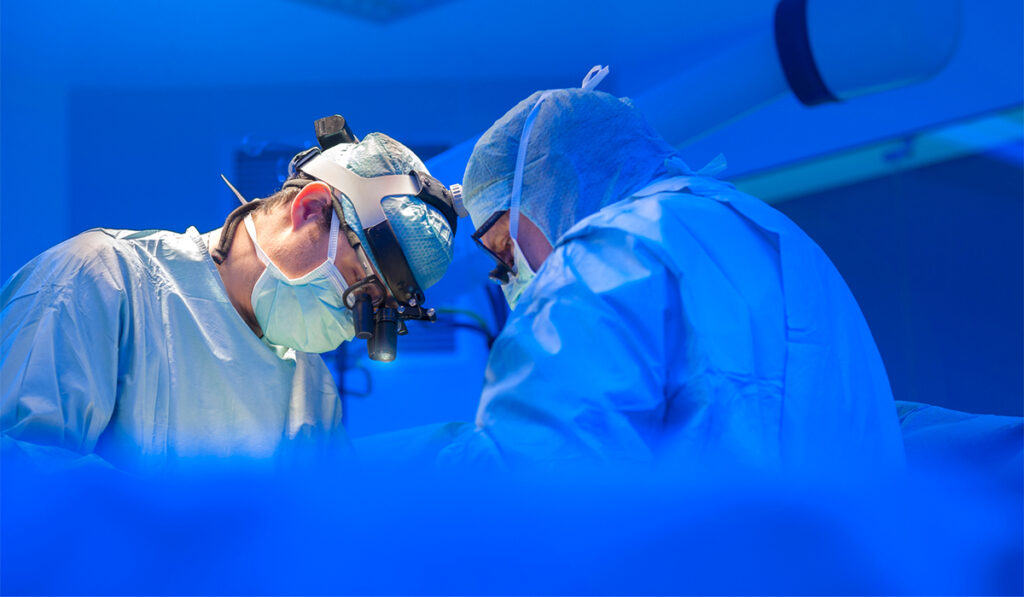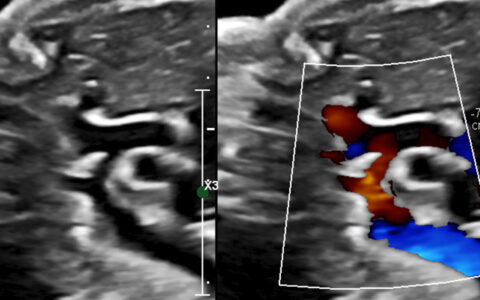Thanks to improved perioperative and long-term care, more people with congenital heart disease (CHD) are surviving to adulthood, with an estimated 1.4 million adults living with the condition in the United States.
Now, the cardiology community is grappling with how to optimally stratify and treat these adults when their hearts and health falter. It is heterogeneous population, but with risks that are different than others with advanced heart disease and heart failure.
Jonathan N. Menachem, M.D., is a transplant cardiologist at Vanderbilt University Medical Center who focuses on adults with CHD and heart failure. We sat down with him to discuss how mainstream cardiology standards of care apply to this group and the future for these patients.
More and More Transplants
Discoveries: What are the most common conditions in CHD patients requiring transplantation, and has this changed over the years?
Menachem: The conditions remain largely the same: mostly single-ventricle patients who frequently require a combined heart and liver transplant; tetralogy of Fallot; and transposition of the great vessels. But we also are seeing an increasing number of patients with Shone syndrome, a rare condition that is one of the most challenging to repair and very high-risk in transplantation.
“If patients survive the first year, their survival is equivalent to or maybe even longer than a non-congenital patient.”
Discoveries: How has the program at Vanderbilt embraced transplantation for adults with CHD?
Menachem: We’re treating our CHD patients with many of the advanced options we have for our non-congenital patients.
I think it was a natural evolution, since we have had such a large CHD program at the pediatric level, and then, the adult level. We became one of the world’s experts on how to manage these patients. Combine that with having one of the largest volume heart transplantation programs in the world, and we became a natural referral center for these patients.
We have gone from transplanting just two adult CHD patients between 2012 and 2017 to 65 since then. This includes multiple combined organ transplants – heart/liver, heart/lung, or heart/kidney. Approximately a third of our transplant referrals are for patients with CHD. We have worked with about 75 different institutions in 35 states..
Donor Pool Expands
Discoveries: How have the advancements changed the landscape for treatment?
Menachem: First, we now involve many different specialties – surgery, cardiology, hepatology, anesthesiology, to name a few – in deciding appropriate timing of transplant or advanced therapies.
Together, we have been aggressive in using our standard heart failure therapies in our CHD population.
We have made all of our newest transplant technologies available to the CHD population, which many centers haven’t done. Our teams have had multiple publications on these topics.
Further, our Vanderbilt transplant team has worked to bring the option for donation after cardiac death (DCD) hearts to prominence in the Southeast over the past five years. And the opportunity to use these DCD hearts and hearts infected with hepatitis C – which we can now cure within weeks of the transplantation – in the congenital population is really going to be the next wave.
We have also worked on alternatives to cold storage of hearts, finding success in ex situ or machine reperfusion in cases where we don’t do DCD transplantation. This has been a rising tide that lifts all boats, including people with CHD.
Set Up For Success
Discoveries: Would you speak to the balancing act of proper timing for this population? What are the most important signals that the time for transplant is right and the situation urgent?
Menachem: We’ve done a lot of work in this space, trying to demonstrate ways of both reducing patients’ risk of needing a transplant, at least in the immediate term, and getting those who do to transplant quickly.
Timing is such an individual thing. We believe that if you recognize that all patients will have heart failure then there should be a heart failure specialist as part of their care team, allowing for needed heart failure treatments to be employed early. Knowing these patients before they need a transplant is very beneficial.
For a patient with heart failure, and in CHD in particular, waiting too long means they start to develop other associated problems, like worsening kidney disease, worsening liver function or lung function, or the more difficult-to-identify frailty component.
Ideally, we would like to send someone for transplant where, by fixing the heart, we fix the patient. Patients who go in but are malnourished, frail, and who have poor kidney function, for example, come out with a heart that works, but they still having bad kidney disease. So, we want to send as healthy a person into transplant as we can.
Discoveries: Are there changes in early treatment that set adults up for more successful transplantation?
Menachem: The big change has been in the perioperative care and ongoing vigilant oversight that is enabling these children with CHD to grow into adults, who, at some point, may need a heart transplant.
Our surgical colleagues have done an amazing job and continue to innovate and improve the surgical components of the cases. Key members of our team include Ashish Shah, M.D., Kelly H. Schlendorf, M.D., Carlos M. Mery, M.D., Seth J. Karp, M.D., and Martin Montenovo, M.D.
These are complicated patients with complicated anatomy who can have issues with bleeding, renal function and hypoxia. We have a number of strategy meetings among different teams to best risk-stratify the patients and come up with surgical plans.
One of our jobs as cardiologists is setting the surgeons up for success. By this I mean that we try to get the patients “tuned up” – getting all their fluid off, stabilizing their kidney function and walking and exercising. Often, we admit them while they wait for transplant because we feel that this gives us control of their health going into surgery. These are probably the sickest patients we have.
Improved Prospects
Discoveries: What’s happening now at Vanderbilt that affects prospects for transplantation patients?
Menachem: Now that transplantation has become so refined, the biggest challenge is getting the patient through the first 30 days. These operations can cause significant bleeding and sometimes the patient winds up on dialysis. Then, if patients survive the first year, their survival is equivalent to or maybe even longer than a non-congenital patient because, for the most part, these patients have been otherwise healthy. And they’re young.
Based on our experience, if we get them over the early humps, life expectancy for this population is maybe 15 years or so from transplantation. Without decades of history yet accrued, we believe it could be much longer.



